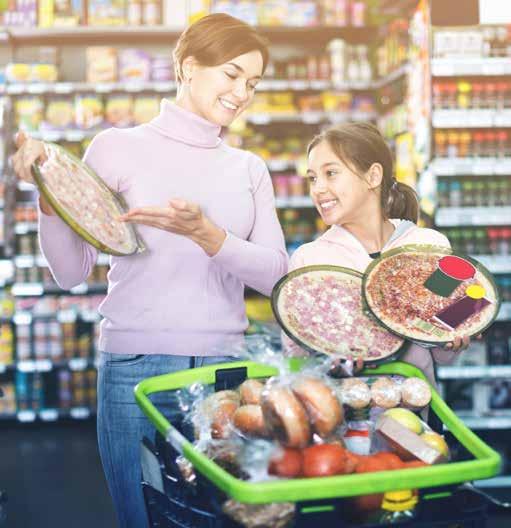
2 minute read
Fostering Food Awareness in Kids
Fostering Food Awareness inKids
WRITTEN BY DIANE WHITTEN, FOOD & NUTRITION EDUCATOR, CORNELL COOPERATIVE EXTENSION SARATOGA COUNTY
Most kids are too busy to pay attention to the quality, or quantity, of what they’re eating, but as their parent, you can help them learn about nutrition and establish healthy eating habits. One of the most important skills you can teach them is to build food awareness by reading food labels. Your teen isn’t likely to sit down for a lecture on the importance of reading food labels, but it’s easy to talk about food choices throughout the day. First, be a role model by reading labels yourself and commenting on what you see and learn, and how it might influence your decision about your own choices. Second, encourage and challenge your kids to read the nutrition facts and comment on them. Here are some suggestions.
GUESSING GAME:
Have your kids guess the serving size of a bowl of cereal or a snack, then actually measure the serving size on the Nutrition Facts Label. Or after pouring their bowl of cereal, have them measure how much they served themselves and compare it to the label information. Remind them that if they poured twice as much as what’s on the label, they have to double the calorie and nutrition information.
PREPACKAGE SNACKS:
Have them pre-package snacks into serving sizes. For instance, if you have nuts, raisins or pretzels ask them to read the label for the serving size and then measure out the amount into individual snack bags for grab-n-go snacks.
ENGAGE FRIENDS:
Kids always want to snack when friends are over, so use the opportunity as a teachable moment. Challenge them to guess how many servings are in a package, or name one nutrient in the food that supplies more than 20% of the Daily Value.
COMPLIMENT THEM:
If you catch your kid reading a food label, compliment him or her with a comment such as, “I’m glad you care about what you’re putting in your body.”
GROCERY STORE SCAVENGER HUNT:
Take your teen grocery shopping and send her or him to the frozen food isle to pick out a frozen pizza. The challenge is to find a pizza that supplies less than 500 mg of sodium for a pizza with meat or less than 400 mg of sodium for a meatless pizza per serving. Pizza is the second largest contributor of sodium in the American diet, just behind bread.


For more ideas on how to foster food awareness in your teens check out this link:
Read the Label Tips for Parents. (www.fda.gov/media/128913/download)
You can learn more about food and nutrition from Cornell Cooperative Extension at: ccesaratoga.org/nutrition-food










